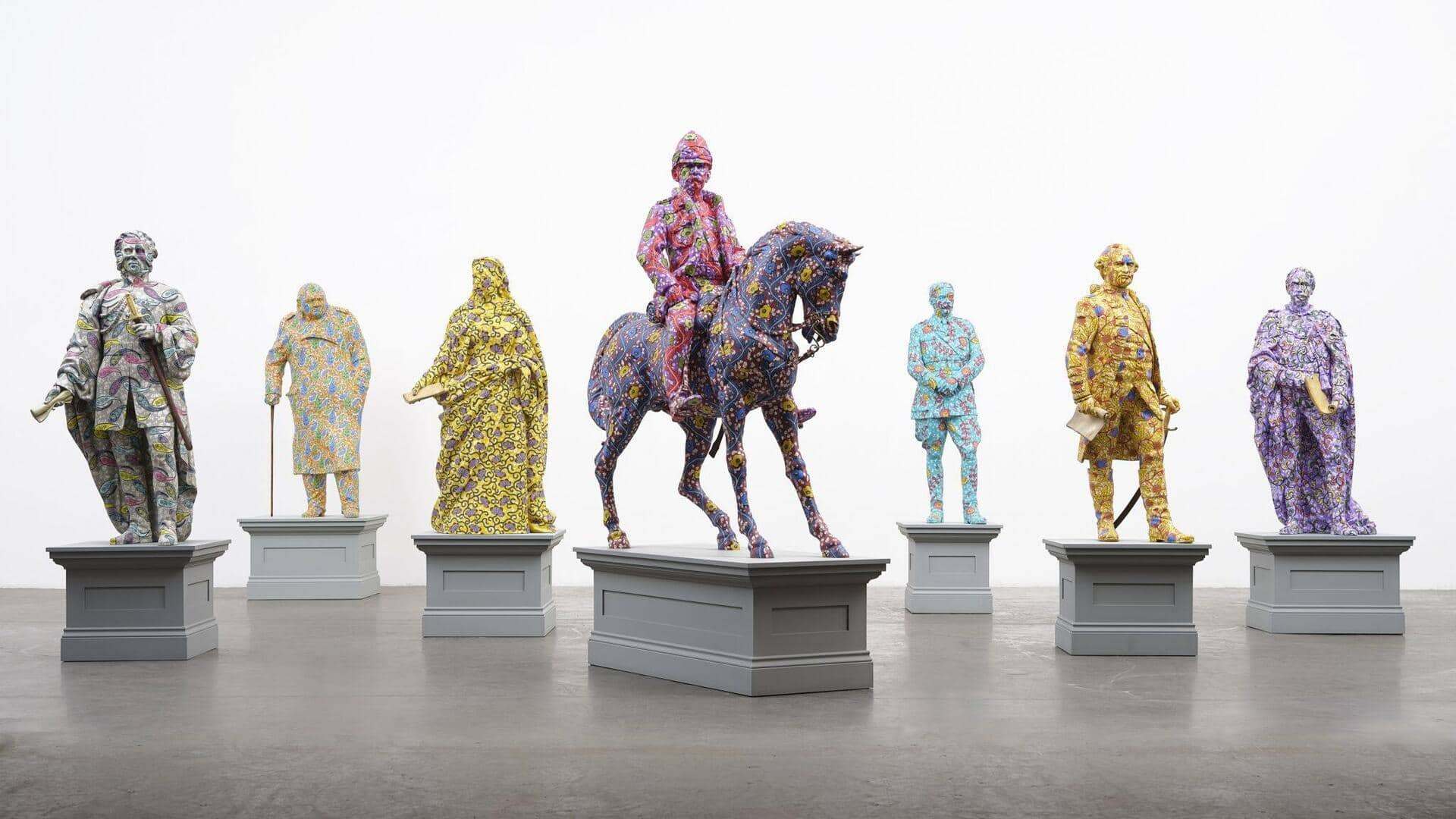
Why Yinka Shonibare's art captivates the world
What's the story
Yinka Shonibare's art is celebrated across the globe for its unique blend of cultural commentary and visual storytelling.
Famous for using vibrant African textiles, Shonibare explores themes of identity, colonialism, and globalization.
His work challenges viewers to reconsider historical narratives and cultural stereotypes.
By incorporating elements from different cultures, he creates a dialogue that resonates with diverse audiences across the globe.
Here's why Shonibare's art is widely acclaimed.
Cultural blend
Cultural fusion in art
Shonibare's art is known for combining African and European elements. He frequently uses Dutch wax fabrics to dress figures in Victorian attire, creating a visually striking contrast.
This contrast challenges cultural authenticity and hybridity. The mix invites viewers to ponder the interconnectedness of cultures and the influence of colonial history on modern-day identities.
Identity themes
Exploration of identity
Identity is a recurring theme in Shonibare's work. He explores how our own and collective identities are informed by history and cultural exchanges.
By showcasing figures that are devoid of heads or faces, he highlights anonymity and universality.
This technique enables the viewers to associate their own experiences with his creations.
Colonial critique
Commentary on colonialism
Through his artwork, Shonibare critically engages with colonial history.
By reimagining historical scenes with African textiles, he highlights the complexities of power dynamics between colonizers and colonized societies.
His work serves as a reminder of past injustices, while prompting discussions about their lingering effects in modern times.
Universal narratives
Global appeal through visual storytelling
The universal themes in Shonibare's art make it so globally appealing.
His way of telling stories through such vivid imagery goes beyond any language.
This enables audiences from different backgrounds to connect with his work both emotionally and intellectually.
This accessibility has largely contributed to him becoming an influential personality in contemporary art circles around the world.